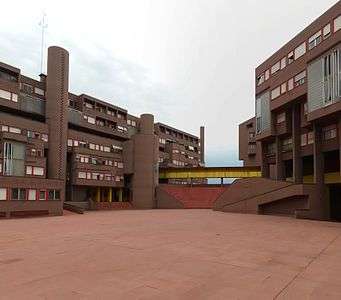Neo-Historism
Neo-Historism, also known as Neo-Historicism, comprises artistic styles that draw their inspiration from recreating historicist styles or artisans. This is especially prevalent in styles used in Revival architecture. Through combination of different styles or implementation of new elements, Neo-Historism can create completely different aesthetics than former styles. Thus, it offers a great variety of possible designs[1].
New Classical architecture is a subtrend of Neo-Historicism.
Evolution
In the history of art, the 19th century saw a new historicist phase marked not only by a reinterpretation of classicism but also of the stylistic eras that succeeded it: Neoclassicism and then Romanticism, itself considered a historicist movement. In architecture and history painting, which increasingly painted historical subjects with great attention to accurate period detail, the global influence of historicism was especially strong from the 1850s onwards. The change is often related to the rise of the bourgeoisie during and after the Industrial Revolution. By the fin de siècle, Symbolism and Art Nouveau, followed by Expressionism and Modernism, acted to make Historicism look outdated, although many large public commissions continued in the 20th century. The Arts and Crafts movement managed to combine a looser vernacular historicism with elements of Art Nouveau and other contemporary styles in the realm of the architecture.
Influences of historicism remained strong even until the 1950s in many countries, especially for representative and prestige buildings (see Socialist Classicism for example). When Postmodern architecture became widely popular in the 1980s, a return to classical architecture language was combined with contemporary elements. Modernist architecture (also called Neomodern) became more dominant in the early 2000s again, joined by short-period fashionable styles like Deconstructivism and Blobitecture. In contrast to this, traditionalist tendencies arose again and remain developing until today.
Gallery
See also
References
- The Classical Language of Architecture by John Summerson, 1963
- "Greek Temple." The Macmillan Visual Dictionary. Unabridged Compact ed. 1995. ISBN 0-02-860810-0
- The Elements of Classical Architecture (Classical America Series in Art and Architecture). Gromort Georges (Author), Richard Sammons (Introductory Essay), W. W. Norton & Co. (June 20, 2001); ISBN 0-393-73051-4
- Kaminer, Tahl (2011-01-20). Architecture, Crisis and Resuscitation: The Reproduction of Post-Fordism in Late-Twentieth-Century Architecture. Routledge. ISBN 978-1-136-83217-8.

.jpg)
